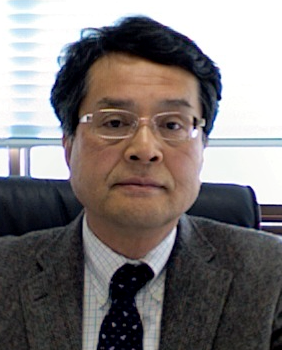Prof. Toshimori Sekine [Hiroshima University, Japan]
Title: Abnormal behavior in silicate melt systems at extreme conditions
Time: 2:00 - 3:00 PM, Wednesday, January 6, 2016
Place: Conference Room 201, HPSTAR (Shanghai)
Host: Dr. Jung-Fu Lin
Abstract:
The system MgO-SiO2 is one of the most important systems for understanding the formation process and dynamics of Earth-type planets as well as impact phenomena. Minerals in this system display various phase transformations, melt, and vaporize as a function of pressure and temperature. These phase changes depend on the stability of phases. Recently there are challenging data in this system to indicate a probable liquid-liquid transition in enstatite composition. At present, however, there is a large gap between experimental and theoretical results on the phase stability relations around 300 GPa and 10000 K. Especially, published experimental results on laser-shocked enstatite crystal and glass have been explained as a liquid-liquid transition. Then subsequent theoretical considerations do not support such a transition at similar conditions.
We carried out laser shock experiments on forsterite at ILE, Osaka University. The forsterite is compositionally just between enstatite and MgO, and the Hugoniot was measured above a pressure of 250 GPa, where the two-stage light-gas-gun data are not available. We measured shock velocity and shock temperature simultaneously. These data are subjected to the thermodynamic checking and compared with the previous results on the possible reactions in the system MgO-SiO2. The results do not support the liquid-liquid transition reported previously, although the liquid composition is not exactly same as enstatite. Forsterite Hugoniot is not so simple as previously thought, and the system MgO-MgSiO3 needs to be investigated further at extreme conditions to model Super-Earths’ interiors and heavy impacts, because there are possible reactions to affect liquid composition as a function of temperature and pressure.
Biography of the Speaker:
 Prof. Toshimori Sekine is a professor of the Department of Earth and Planetary Systems Science, Hiroshima University. He is currently interested in shock compression in condensed mater to understand impact phenomena and planetary interior, as well as impact-origin of life-related biomolecules. He is a Fellow of the American Physical Society. He worked at University of Chicago, Monash University, Australian National University, California Institute of Technology, and National Institute for Materials Science (former NIRIM) where he established an excellent shock wave lab in Tsukuba. His interests cover a wide range of high temperature and high pressure science and technology for applications to earth and planetary science and materials science.
Prof. Toshimori Sekine is a professor of the Department of Earth and Planetary Systems Science, Hiroshima University. He is currently interested in shock compression in condensed mater to understand impact phenomena and planetary interior, as well as impact-origin of life-related biomolecules. He is a Fellow of the American Physical Society. He worked at University of Chicago, Monash University, Australian National University, California Institute of Technology, and National Institute for Materials Science (former NIRIM) where he established an excellent shock wave lab in Tsukuba. His interests cover a wide range of high temperature and high pressure science and technology for applications to earth and planetary science and materials science.
